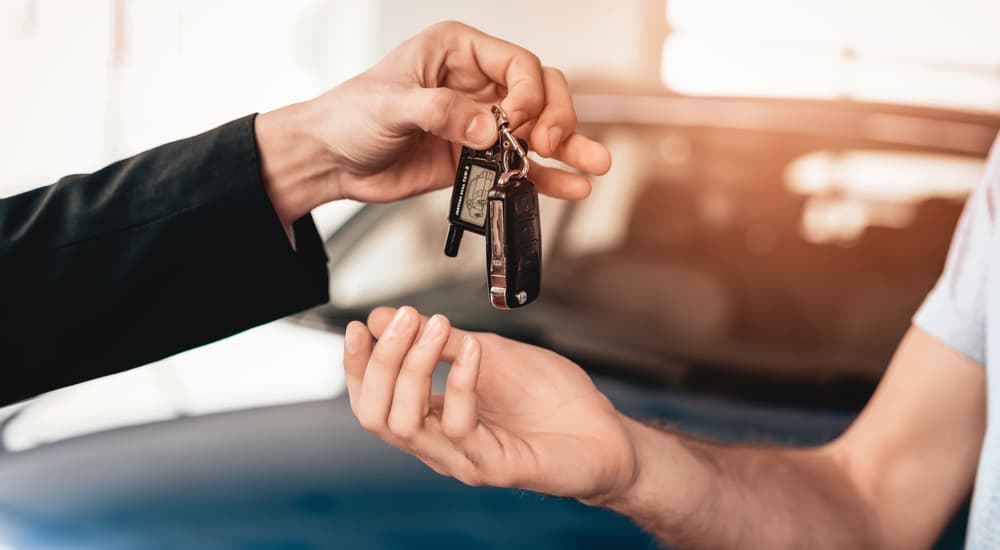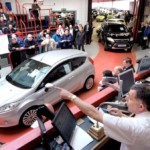If you’ve tried to buy a used car in, well, pretty much the last year, then you already know how unpleasant the process is at the moment. It’s not that finding a vehicle has become much worse, though there are some shortages at many smaller dealerships; it’s that the pricing on used vehicles has become horrendous. Every study, every survey, and every piece of data shows the same thing: new vehicles are harder to get and pricier on average, while used models have become more expensive than ever before. People are still selling their vehicles for more than they bought them for just a few years ago.
I’d love to be able to tell you that it’s all about to change and that there’s good news right around the corner, but unfortunately, I’m not here to lie to you. The reality is that this will last for a while longer, and you’ll want to hold off on buying a vehicle for as long as possible. If you’re looking to sell a car that you have: as long as you don’t just need to turn around and buy one, this is absolutely the time to do it. Otherwise, it’s rough right now for anyone looking to buy a car, and it’s going to stay that way for some time.
How Did Things Get This Bad?
Like so much that’s messed up in the world at the moment, the current disaster that is the used car market owes its roots to the COVID pandemic. As you remember, when things started getting bad in 2020, there were shutdowns across the country in numerous industries, including auto manufacturing. In response to this, car companies reduced their orders for microchips needed to make cars—they figured they’d need to make fewer vehicles, so cutting costs on fewer chips made sense, right? You can see where this is going…
Car sales boomed in the second half of 2020, at which point the manufacturers needed more vehicles and started producing as many as they could. Then the chip shortage hit—microchip manufacturers had also shut down before this and were scrambling to catch up with demands. At this point, car companies are pretty far back in line for getting these chips, with companies like Sony and Apple way ahead of them. As a result, 2021 saw a shortage of new vehicles being made and delivered, which caused an increased demand for used cars.
If you tried to buy a vehicle last year, you probably already know all of this: new cars were harder to come by, so more people looked to the used market. As dealerships started selling huge amounts of used vehicles, prices for them began going up very fast. “Skyrocketing” would be a very accurate way to put it. Suddenly, used cars were a hot commodity, and the prices started getting higher than when sold as new—it was pretty unprecedented. Fortunately, new models started showing up, but the numbers were still much lower than expected all across the country, so used vehicles remained in high demand.

The Current Situation
Here we are, about two years after things started getting crazy with the pandemic, and the used car market is still a hot mess. New cars are continuing to ship, but the numbers aren’t anything like they were before all of this. For example: back in 2019 (feels like a decade ago), there were often about 4 million brand-new vehicles across the US just waiting to be sold—currently, there are around 1 million. That’s a huge difference and points to how drastically things have changed.
Used vehicles are still in high demand, and this has resulted in prices remaining incredibly high. Prices are generally not climbing as aggressively as they were about ten months ago; however, they haven’t come down the way a lot of people hoped they would. This is made even worse by the fact that brands like Ford and GM have largely abandoned the inexpensive sedan market. You can get some good ones coming in from overseas, but what’s available is much reduced from a decade ago. Even worse, as microchips remain scarce, car companies have used the chips they get primarily for the models that make them the most money: luxury vehicles and big trucks.
If you want to buy a new luxury SUV, then you’re probably in luck—you might have to do a little looking, but you’ll find one. On the other hand, if you’re looking for a used vehicle with 80,000 miles on it for $10k, then you better have a time machine. These deals don’t exist anymore, and when they do pop up, the competition for them is intense. This also means it’s incredibly difficult to haggle or negotiate a better price, especially on a used vehicle. You’re free to walk away because the dealership knows someone else will come around in the next 24 hours who’s happy to pay what you wouldn’t.
Hope on the Horizon?
In the same way that a weird trickle-down effect created this situation (no chips > new-car shortage > used car inflation), a similar situation is what’s going to help fix it. Once microchips become plentiful again, there’s a good chance the new car inventories will boom once more, particularly with lower-priced models. When that happens, the used market will likely regulate itself downward and get back to a more reasonable point.
Now for the bad news: this could well be a year or more away at this point. The chip shortage will likely continue throughout most of this year, and we might not see it come to an end until early 2023 (this is what a lot of experts have realistically said from the beginning). Even if the chips do roll out this year, it will still take time for new car inventories to catch up and eventually impact the used car market. All things being equal, the prices should come back down to a reasonable point, but that might not happen until 2023.

Best Advice Going Forward
Like six months ago, the best advice is to wait to buy a car if you can manage it. For more than 50 years, the University of Michigan has been polling people to ask if they think it’s currently a good or bad time to buy a car. Back in the worst part of the mid-2000s recession, about 50% of people polled said it was a bad time to buy a car. The most recent poll shows that more than 70% of people said it was a bad time to be a car-buyer, and I have to agree.
As a customer, you have very little power for bargaining or negotiating because someone else will inevitably pay what you refuse. So not only are prices at record highs for used vehicles, but you really can’t do much about it. The best advice is to wait if at all possible, rather than to buy a car (new or used) at the moment. There are concerns that some of this could become a new normal, with manufacturers hesitant to go back to the way things were in the ancient days of 2019, but there’s nothing to support that fear. Companies want your money, which means having something to sell you at a competitive price you want to pay.
This is the perfect time to sell a vehicle, so if you’ve been thinking about downsizing from a two-car household to just one, then you can definitely make a profit on selling your car right now. Even if it’s not in great shape, you’ll get more for it than you would have a year or so ago. You will need to be absolutely sure that’s a change that will work for you because the last thing you want to do is find yourself needing to turn around and buy a car. If you can’t wait, then do your best to shop around and compare prices for the best deals, and don’t hesitate to make a move if you find something that’s perfect for you.



